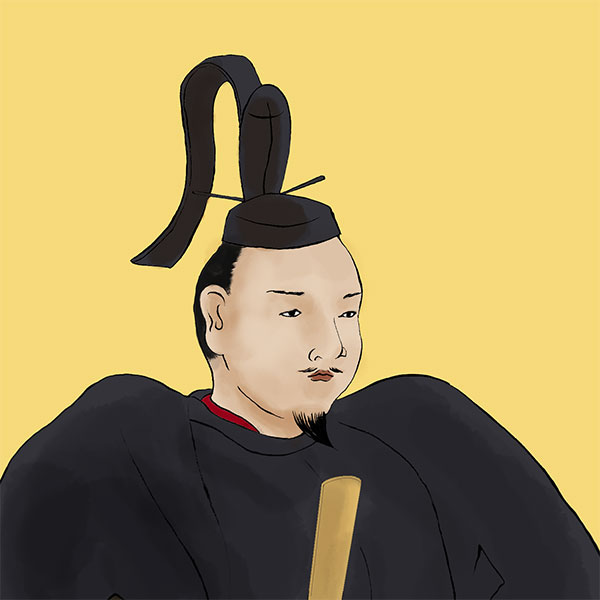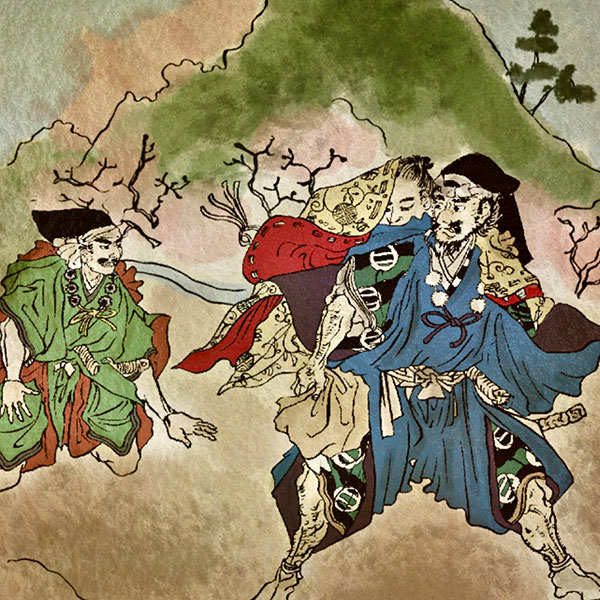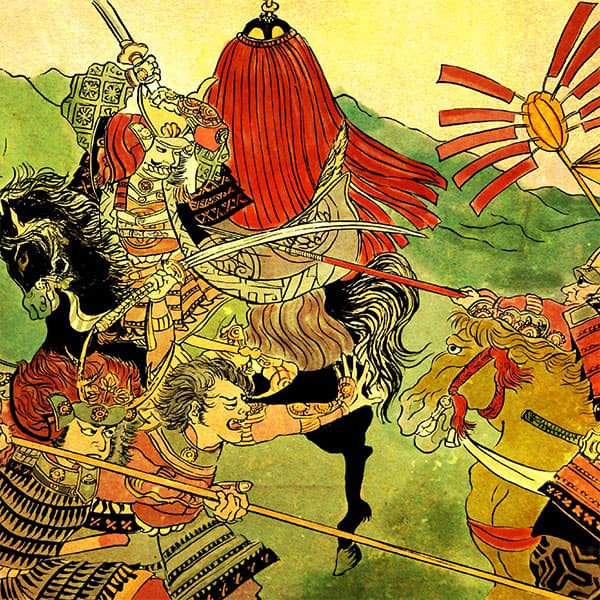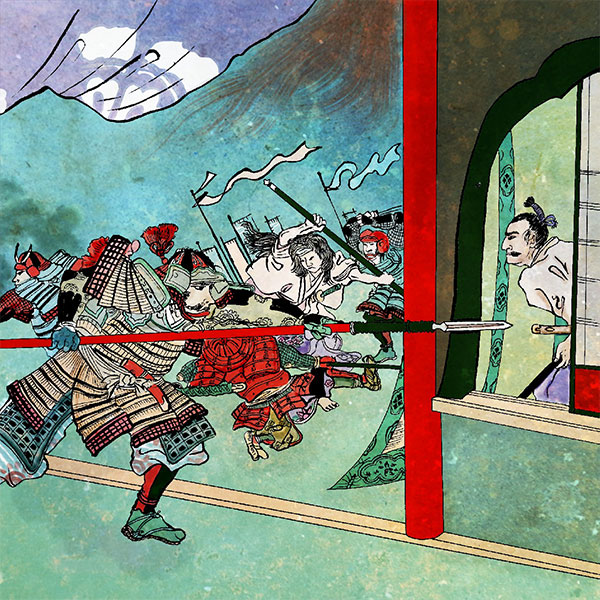Yoshiaki Ashikaga (2/2)The last general of the Muromachi shogunate

Yoshiaki Ashikaga
- Article category
- biography
- name
- Yoshiaki Ashikaga (1537-1597)
- place of birth
- Kyoto
- Related castles

Nijo Castle
- related incident
Furthermore, Yoshiaki received high rewards for Nobunaga's military exploits, including appointment as vice shogun or kanrei (or kanrei dai), succession to the Shiba clan's headship, the position of sahyei kō, the official rank of the head of the family, and tomoyuki in the Gokinai area. Although Nobunaga tried to bestow honors on him, he refused most of them.
In the end, Nobunaga only received formal investiture to Danjotada and permission to use the paulownia crest and nihikiryo. Furthermore, Nobunaga seems to have chosen fruit over name, as he requested that Sakai, Kusatsu, and Otsu be placed under his direct control.
Seeing the restoration of the shogunate, Yoshihisa Shimazu sent Tsukihisa Kiiri to Kyoto and presented him with 100 ryo of gold to express his congratulations, and Yoshihiro Sagara and Motonari Mori also promoted the estates. In November, Yoshiaki expelled Sakihisa Konoe on charges of murdering his older brother Yoshiteru and facilitating Yoshihide Ashikaga's succession to the shogun position, and in December reinstated Haruyoshi Nijo as Kanpaku.
From fighting together with Nobunaga to defecting
At first, Yoshiaki had a good relationship with Nobunaga, but he gradually became dissatisfied with Nobunaga's lack of respect for the general.
On May 13, 3rd year of Genki, Yoshiaki sent an imperial letter to Takeda Shingen of Kai, ordering him to take military action for the sake of ``tranquility in the country.'' This caused Shingen to turn his attention to the west. Already in January of the 3rd year of the Genki era, Shingen had received a request from Kenyo, who was related to him, to go behind Nobunaga's back.
In September, Nobunaga sent Yoshiaki his written opinion, ``Seventeen Articles of Different Views.'' This opinion piece criticized Yoshiaki on various points, and in particular, it mentioned the names of past generals who had been killed, which led to an inevitable conflict between Nobunaga and Yoshiaki.
On October 3, Takeda Shingen announced his departure to Yoshikage Asakura and Nagamasa Azai, and on the same day he began advancing from Kofu and invaded Mikawa and Totomi, the territories of the Tokugawa clan (Nishigami Operation). The popular theory is that Yoshiaki rebelled against the 17 points of difference and secretly informed Shingen, but in recent years there is a view that this invasion was aimed at Tokugawa Ieyasu, and that Yoshiaki was not the one who communicated with him. There is also.
When Shingen defeated the Oda and Tokugawa allied forces at the Battle of Mikatagahara and routed Tokugawa Ieyasu, Nobunaga was forced to defend his homeland of Owari and Mino and found himself in a predicament.
Due to Shingen's sudden advance, there was a debate within the shogunate over whether to side with Nobunaga or Shingen, and many of the shogun's retainers supported Shingen, leading to a separation between Yoshiaki and Nobunaga.
After that, Yoshiaki was exiled from Kyoto and spent many years wandering.
Repairing relations with Hideyoshi after Nobunaga's death and resignation of Shogun
In the 10th year of Tensho, Toyotomi Hideyoshi assumed power after Nobunaga died in the Honnoji Incident.
In July 1999, Hideyoshi was appointed Kanpaku by the Imperial Court. After that, the era of ``Kanpaku Hideyoshi and Shogun Yoshiaki'' continued for two and a half years. During this time, Yoshiaki, as shogun, encouraged the Shimazu clan, which resisted Hideyoshi, to make peace with Hideyoshi.
In August 1586, Hideyoshi's campaign to pacify Kyushu began with Mori Terumoto as the vanguard. Afterwards, the Shimazu clan surrendered to Hideyoshi. Hideyoshi recognized Yoshiaki's achievements and allowed Yoshiaki to return to Kyoto, as he had requested, and ordered the Mori clan to procure a ship for Yoshiaki to use to return to Kyoto.
Yoshiaki returned to Kyoto while being escorted by Mori clan soldiers. It was Yoshiaki's first time in Kyoto in about 15 years. In December, Yoshiaki went to Osaka and became Hideyoshi's vassal. At this time, Hideyoshi granted him a territory of 10,000 koku in Makishima, Yamashiro Province. On January 13, 1588, Yoshiaki visited the Imperial Palace with Hideyoshi and handed over the title of shogun to the Imperial Court. As a result, the Muromachi Shogunate collapsed in both name and reality.
After that, Yoshiaki became a monk again and took the name Shozan Dokyu.
later years and final days
In his later years, Yoshiaki received warm treatment from Hideyoshi. Because he was a former shogun, he was given a higher rank than great daimyo such as Tokugawa Ieyasu, Mori Terumoto, and Uesugi Kagekatsu, and was included in Hideyoshi's Otogishu along with Shiba Yoshigin, Yamana Takahiro, Akamatsu Norifusa, and others, and Hideyoshi's He became a good conversation partner.
On March 20, 1592, during the Bunroku War, Yoshiaki stayed at Shokoku-ji Rokuon-in temple, prepared his weapons, and prepared to go to war at the request of Hideyoshi. .
Yoshiaki departed from Kyoto with Hideyoshi, accompanied by an army made up of famous families such as the venerable Houkosei, and was seen off by Emperor Goyozei.
When Hideyoshi arrived at Hizen Nagoya Castle, Yoshiaki took up camp on the outer wall of the castle.
In August 1597, Yoshiaki was sick in his bed, unable to recover, and passed away on the 28th in Osaka. The cause of his death was said to have been a tumor, and he died within a few days of being sick, but it is said that his old age and being sent to the front as far as Hizen may have helped him cope. He passed away at the age of 61.
Yoshiaki was forced to give up his life as a monk, returned to the secular world, became a shogun, and was at the mercy of the times, but in the end he was treated well by Hideyoshi. In order to store Yoshiaki's hair in the Ashikaga Shogun's Hair Tower at Toji-in Temple, it is said that Joga became a preceptor and shaved Yoshiaki's hair.
Reread Yoshiaki Ashikaga's article
- related incident

- WriterTomoyo Hazuki(Writer)I have loved history and geography since my student days, and have enjoyed visiting historical sites, temples and shrines, and researching ancient documents. He is especially strong in medieval Japanese history and European history in world history, and has read a wide range of things, including primary sources and historical entertainment novels. There are so many favorite military commanders and castles that I can't name them, but I especially like Hisashi Matsunaga and Mitsuhide Akechi, and when it comes to castles, I like Hikone Castle and Fushimi Castle. Once you start talking about the lives of warlords and the history of castles, there's a side of you that can't stop talking about them.






